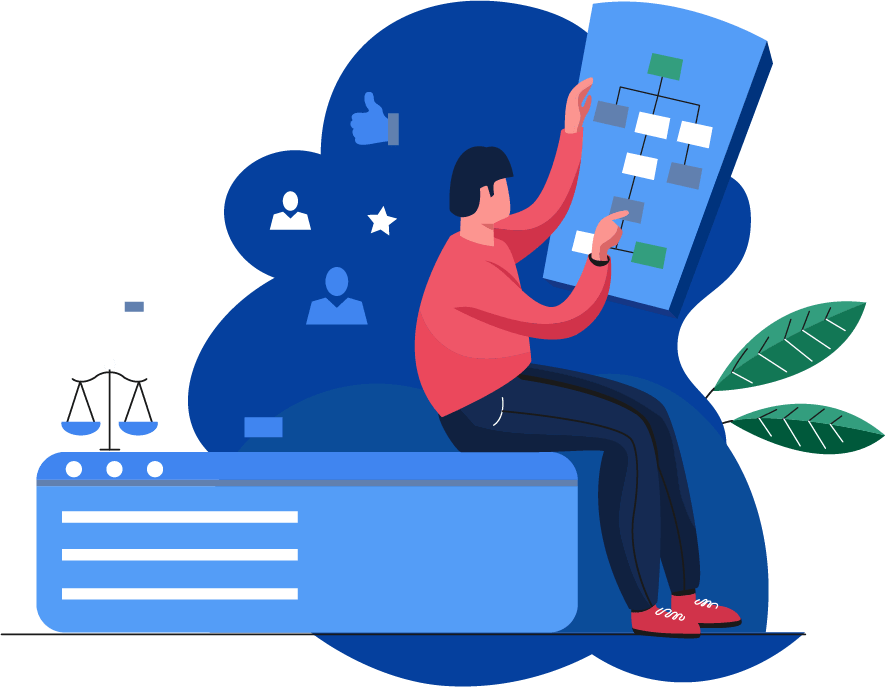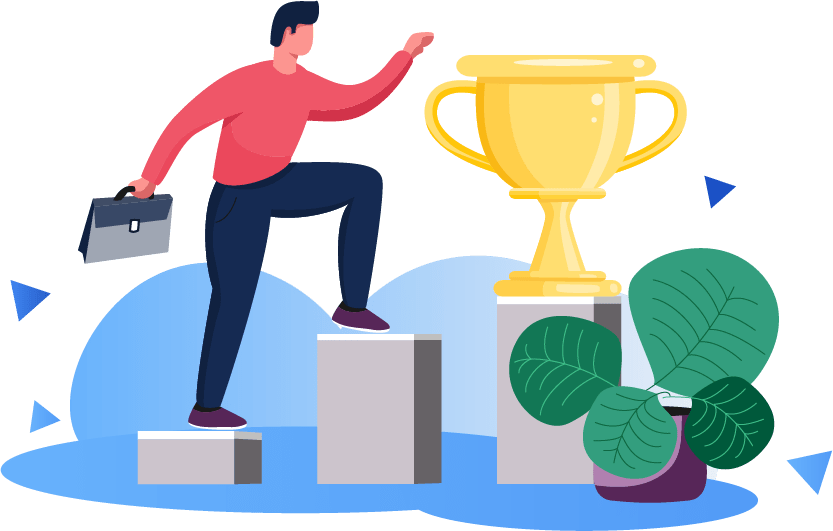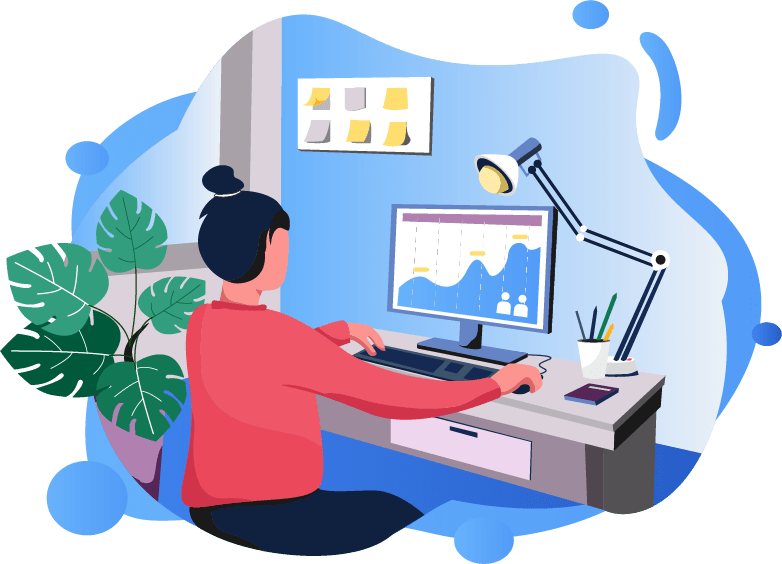Customer Success Fundamentals
• What is Customer Success and Why is it Important?
• What is Customer Success Management?
• Why Invest in Customer Success Management?
• How Does Customer Success Work?
• The Role of the Customer Success Manager
• Understanding Outcomes and KPIs
• Treating your Customer as your Business Partner
• Is Customer Success the same as Customer Happiness?
• Why is Customer Success Management Becoming More Important?
• How does Customer Success Management help to Realize Business Value?
• Where do CSMs fit within the Wider Organizational Structure?
• Customer Renewals and Retention/Churn
• Customer Success in Different Business Types
• Land and Expand Sales Motions
• Customer Lifetime Value (CLV)
• Customer Advocacy
• What is your organization’s customer success strategy?
• What is your role in helping to fulfil your organization’s customer success strategy?
• What assets and resources are available to help you?
• How will you plan and manage your time?
• Internal evangelization of customer success management
• The RAPAE Task Model – a way to categorize CSM activities
• Research, Analysis and Planning as Enablers of Action
• Understanding the Critical Path
• Introducing The Practical CSM Framework
• How should the Practical CSM Framework be used?
• Getting in Front of Senior Management and ‘C’ Level
• Customer Stakeholders
• The 14 Tenets of Customer Success
• Reflecting on your own knowledge, skills and experience
Business Fundamentals
• What is meant by the term “business fundamentals”
• Why an understanding of business fundamentals is essential to many (if not all) customer success managers
• Why businesses exist and how they fulfill this purpose
• How value is generated for the business’s owners
• Who (besides owners) businesses generate value for, and why this is important
• How businesses calculate both their expenditure and their profits in order to generate an “annual return” statement
• Understanding customer segmentation
• Understanding value propositions
• How customer segmentation relates to value propositions
• How businesses are structured and managed
• Management Levels and Decision Making
• A review of a typical company org chart
• What is meant by the term “business capability”
• How the concept of business capabilities can be used to define and understand everything that a business does
• Why businesses are constantly needing to change, with examples to illustrate how this works in real life
• Vision and strategy formulation and how it occurs in a modern business
• An overview of the BMM (Business Motivation Model), including discussion on each component of the BMM and how they come together to create meaningful change within a business
Preparation
• What is PCSMF Phase 1: Preparation all about?
• Defining the customer engagement
• Accessing information
• Internal handover
• Customer information
• Solution information
• Initiative information and customer outcome requirements
• CSM outcome requirements
• Stakeholder information
• Third parties and project status
• Managing information gaps
• Formulating an engagement strategy and roadmap
• Tools for PCSMF Phase 1: Preparation
• Providing a Joined Up Customer Experience
• Sources for Researching Customer Information
• Selecting & Validating Customer Information
• Information to Research
• The Customer Research Checklist Tool: Overview
• The Customer Research Checklist Tool: Customer Tab
• The Customer Research Checklist Tool: Solution Tab
• The Customer Research Checklist Tool: Initiative Tab
• The Customer Research Checklist Tool: Stakeholders Tab
• The Customer Research Checklist Tool: Progress Tab
• The Customer Research Checklist Tool: Utilization
• Engagement Planning & Engagement Strategy Tool
• Engagement Strategy: Priority, Complexity & Maturity
• Engagement Strategy: Outcomes, Milestones & Measurements
• Engagement Strategy: Activities & Roadmap

Commitment
• What is PCSMF Phase 2: Commitment all about?
• The customer commitment process
• Communicating with the customer
• The initial customer meeting
• Developing a stakeholder management strategy
• Tools for PCSMF Phase 2: Commitment
• Working With the Customer: Key Concepts
• Working With the Customer: Credibility & Rapport
• The Customer Success Proposal
• Meetings Best Practice
• Consultative Questioning
• Using the RACI Matrix
• Using the Stakeholder Management Matrix
• Creating a Stakeholder Management Plan
• Completing the Customer Success Proposal
Onboarding
• What is PCSMF Phase 3: Onboarding all about?
• Understanding onboarding
• Generic and customized onboarding models
• Onboarding as a professional service
• Tools for PCSMF Phase 3: Onboarding
• What is “Onboarding”?
• Why is Onboarding Important?
• Onboarding Vs Adoption Vs Value Realization
• Selecting an Onboarding Service Model
• Using a Generic Onboarding Service Model
• Using a Customized Onboarding Service Model
• Onboarding Services at Your Company
• Four Influencers of Onboarding
• The Customer Onboarding Scoring Matrix
• Onboarding Discussions with the Customer
• Customized Onboarding and Full Adoption Services
• Three Choices for Onboarding: Generic, Customized or Fully Bespoke
• Information for Generic Onboarding
• Information for Customized Onboarding
• Managing the Onboarding Process
• Developing the Right Onboarding Services

Adoption Planning
• What is PCSMF Phase 4: Adoption
• Planning all about?
•Understanding Impacted Users
• Research Techniques
• CSM Involvement in Adoption Research
• Working with multiple stakeholders
Step 1: Determine Adoption Requirements
Step 2: Identify Process Changes
Step 3: Define Impacted Groups (IGs)
Step 4: Document Practical Considerations
Step 5: Determine Communication, Training and Support Requirements
Step 6: Capture Adoption Barriers and Risks
Step 7: Create Outline Adoption Plan
Step 8: Create Adoption Proposal and Gain Acceptance
Step 9: Complete Full Adoption Plan and Publish Adoption Roadmap
• Activities and Outputs for PCSMF Phase 4: Adoption Planning
• Defining Adoption & the Importance of Adoption
• Adoption Pilots and Phases
• Adoption and Change Management
• The ADKAR Change Management Model
• Knowledge Skills & Attitude (KSA) Concepts
• Directly & Indirectly Impacted Users
• Research Techniques: The Workshop
• Getting the Adoption Requirements Agreed
• The Role of the CSM in Adoption Planning
• The Adoption Planning Process
• Adoption Planning Tools: Existing Tools
• Adoption Planning Tools: General
• Adoption Requirements
• Adoption Planning Tools: Capabilities & Processes
• Adoption Planning Tools: Impacted Groups
• Adoption Planning Tools: Adoption Activities
• Adoption Planning Tools: Practical Considerations
• Adoption Planning Tools: Adoption Barriers
• Adoption Planning Tools: Adoption Risks
Adoption Implementation
• What is PCSMF Phase 5: Adoption
• Implementation all about?
• Project Management and the Role of the CSM
• Benefits of a Multi-Phased Adoption Program
• Preparing for Project Kick-Off
• Managing People
• Managing Tasks
• Measuring and Reporting
• Handling Problems
• Dealing with Change
• Completing the Project
• Tools for PCSMF Phase 5: Adoption Implementation
• Activities and Outputs for PCSMF Phase 5:
• Adoption Implementation
• Adoption Implementation Roles
• Project Management Principles & Best Practices
• Preparing for Project Kick-Off
Managing People
• Managing End User Conflict
• Adoption Task Management
• Work Breakdown Structure (WBS)
• Understanding The Critical Path Method (CPM)
• Using The Critical Path Method (CPM)
• Applying WBS and CPM to an Adoption Initiative
• Adoption Activity Measurement & Reporting Overview
• Targets, Baselines and Milestones
Adoption Reporting
• Handling Problems During Adoption
• Problem Handling Best Practice Steps 1 to 6
• Adoption Project Completion
• Readiness for Value Realization

Value Realization
• What is PCSMF Phase 6: Value Realization all about?
• Comparative Duration of the Value Realization Phase
• Balancing the Needs of Multiple Customers
• Helping Customers to Realize Their Value
• Maximizing Renewals
• Upselling and Crosselling
• Feedback and Advocacy
• Has Everything Been Done?
• Tools for Practical CSM Framework Phase 6: Value Realization
• Activities and Outputs for Practical CSM Framework Phase 6: Value Realization
• Promised and Anticipated Value
• Determining the Value Generated
• Direct Value (Direct Benefits)
• Value is Not Always the Same
• Consultative Questioning
• Selecting Key Performance Indicators (KPIs)
• Problems With Value Realization
• Where Does Value Come From?
Knowledge is Power
• Progress Towards Outcome Attainment
• Steps in the Performance Management Process
• Defining the Outcome Requirements and KPIs
• If Stakeholders Don’t Know What They Want…
• If Stakeholders Don’t Agree Between Them as to What They Want…
• Converting Indirect Value into Direct (Financial) Value
• Working to the Customer’s Agenda
Suppliers Need Customers to Remain as Customers
• Realizing Value Vs Attaining Value
What is the Customer’s Agenda?
Problem Solving: What if the Value is Not Being Attained?
• What is Root Cause Analysis?
• Root Cause Analysis Steps
• Five “Why?”s and the Cause and Effect Diagram
• The Role of the CSM in Sales Activities
• Using Consultative Questioning to
• Determine Outcome & KPI Requirements
• Reporting on Progress Towards Outcome Attainment
• Reporting on the Financial Returns from the Investment
Engagement Evaluation
• What is PCSMF Phase 7: Engagement Evaluation all about?
• The importance of reviewing CSM activity
• Increasing the customer success management knowledge base
• Updating personal and team best practices
• Templating common process steps
• Improving your own CSM practice
• Working with quarterly activity targets
• Improving your Team’s practice
• Celebration of Success
• Activities and Outputs for Practical CSM
• Framework Phase 7: Engagement Evaluation
• Overview of the Executive Business Review (EBR)
• Cadence & Attendees the Executive Business Review
• Structure of an Executive Business Review
• Executive Business Review Best Practice
• Getting Senior Stakeholders to Attemd
• What Value Has the Customer Received From this Engagement?
• What Value Has the Supplier Received From this Engagement?
• What Value Has the CSM Received From this Engagement?
• Using the Engagement Evaluation Tool
• Using the Personal Evaluation Tool
• The Customer Success Roadmap
• Example Customer Success Roadmap

Putting It All Together
• Who Benefits from Customer Success Management?
• Common CSM Traps and Pitfalls
• Customer Success is the Jewel in the Customer Experience Crown
• The Future of Customer Success
• Glossary of Essential Customer Success Management Terminology
• The Customer Success Knowledge base
• Using a Best Practice Framework
• Using Tools & Templates
• Customer Success Management as a Sales Feature
• The Partnering Approach
• The “Shared Risks, Shared Rewards” Model
• Pitfall 1: Doing Too Much for Each Customer
• Pitfall 2: Not Leaving Time for Continual Professional Development (CPD)
• Pitfall 3: Not Understanding Your Own Company’s Customer Success Strategy
• Pitfall 4: Focusing on Technical Instead of Business Issues
• Pitfall 5: A Lack of Insight Into Your Customer’s Business
• Pitfall 6: Too Much Time Spent Doing Admin
• Pitfall 7: Lack of Best Practice Resources Such as Frameworks, Tools & Templates
Individual Training Certification Syllabus will be published soon. Stay tuned!

